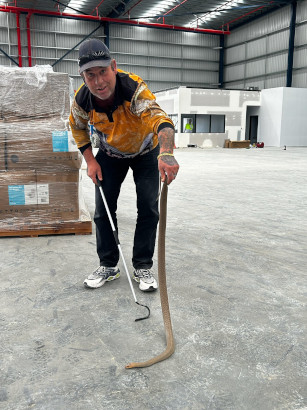Snakes, often misunderstood and feared, are vital components of ecosystems around the world. Unfortunately, many snake species are facing threats such as habitat loss, poaching, and human-wildlife conflict, leading to declines in their populations and pushing several species to the brink of extinction. In this article, we will explore the importance of snake conservation efforts and the initiatives aimed at safeguarding these fascinating and ecologically significant reptiles.

The Role of Snakes in Ecosystems
Before delving into conservation efforts, it's essential to understand why snakes are crucial to ecosystems. Snakes play multiple roles that contribute to the overall health and balance of natural environments:
-
Pest Control: Many snakes are apex predators that help control rodent populations. By preying on rodents, they prevent overpopulation and the potential ecological imbalances it can create.
-
Biodiversity: Snakes maintain biodiversity by regulating prey species and preventing any one species from dominating an ecosystem. This, in turn, supports a variety of other species that rely on these prey items.
-
Food Web Dynamics: Snakes are integral parts of food webs, serving as both predators and prey. Their presence affects the populations of both primary prey and predators, influencing the dynamics of entire ecosystems.
-
Seed Dispersal: Some snakes play a role in seed dispersal by ingesting seeds and excreting them in different locations. This aids in plant diversity and regeneration.
Challenges to Snake Populations
Despite their ecological importance, snake populations face numerous threats:
-
Habitat Loss: Urbanization, deforestation, and agricultural expansion are destroying snake habitats, reducing their available living spaces.
-
Poaching: Snakes are often poached for their skins, meat, or use in traditional medicine. The pet trade also contributes to overharvesting.
-
Human-Wildlife Conflict: Snakes, especially venomous species, face persecution due to fear and misunderstanding, leading to unnecessary killings.
-
Climate Change: Climate change can affect snake populations by altering their habitats and impacting the distribution of their prey.
Conservation Efforts
Thankfully, many organizations and individuals are dedicated to the conservation of snakes and their habitats. Here are some of the key initiatives and strategies:
-
Habitat Protection: Establishing and maintaining protected areas and wildlife reserves is critical for preserving snake habitats. These areas provide safe havens for both snakes and their prey.
-
Research and Monitoring: Ongoing research helps scientists understand the biology, behavior, and ecological roles of snake species. Monitoring populations can identify declines and allow for timely conservation action.
-
Education and Outreach: Public awareness and education campaigns are essential for changing the negative perceptions of snakes. By teaching people about their importance and dispelling myths, we can reduce human-snake conflicts.
-
Legislation and Regulation: Enacting and enforcing laws against poaching and illegal trade in snake species is crucial. CITES (Convention on International Trade in Endangered Species of Wild Fauna and Flora) plays a significant role in regulating the international trade in snakes.
-
Habitat Restoration: Efforts to restore degraded habitats can benefit not only snakes but also other wildlife that rely on these ecosystems.
-
Conservation Breeding Programs: Some organizations maintain captive breeding programs for endangered snake species, with the goal of reintroducing them into the wild.
Success Stories
Several snake conservation programs have made significant strides in protecting endangered species. One notable example is the San Francisco Garter Snake Recovery Program, which has successfully increased the population of this rare and beautiful snake in its native habitat.
Conclusion
Snake conservation is not just about protecting individual species but also about preserving the delicate balance of ecosystems. These often-misunderstood creatures play vital roles in maintaining the health and biodiversity of our planet. By supporting and contributing to snake conservation efforts, we can ensure that these fascinating reptiles continue to thrive and contribute to the natural world. Remember, the survival of snakes is intertwined with the survival of countless other species and the ecosystems we all rely on.